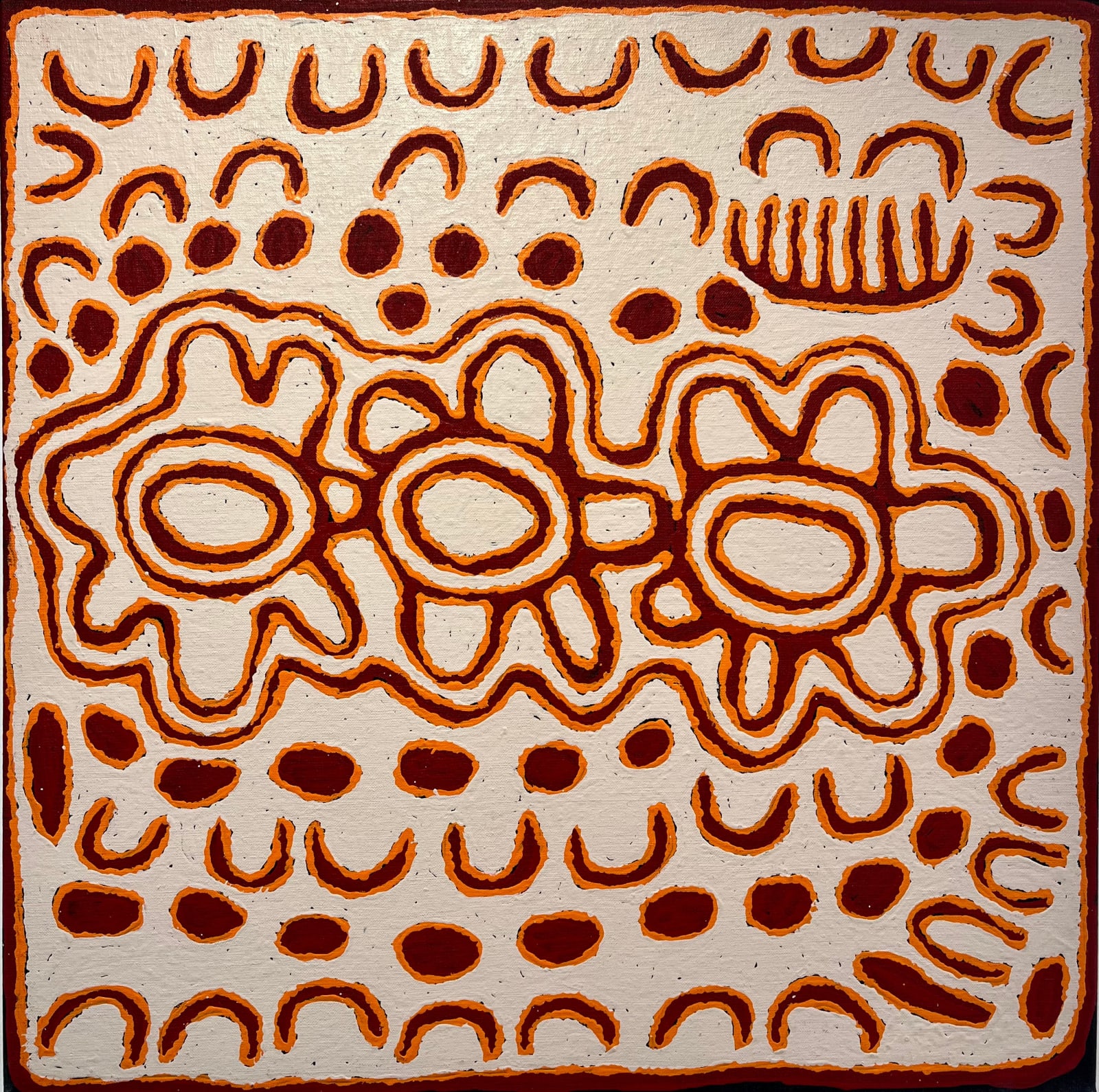Josephine Napurrula Pintupi, b. 1948
2018
acrylic on canvas
61 x 61 cm
24 1/8 x 24 1/8 in
24 1/8 x 24 1/8 in
MM3721
Sold
This painting depicts designs associated with the site of Tjukurla in Western Australia, near where the community now stands. In ancestral times a group of women, represented by the ‘U’...
This painting depicts designs associated with the site of Tjukurla in Western Australia, near where
the community now stands. In ancestral times a group of women, represented by the ‘U’ shapes, gathered at Tjukurla to performs the dances and sing the songs associated with the area. While at Tjukurla the women also spun hair with which to make nyimparra (hair-string skirts), which are worn during ceremonies. The nyimparra is depicted in this painting by the grid-like design. The women later travelled north towards the Kintore region. As they travelled they gathered large quantities of the edible fruit known as pura (also known in Pintupi as pintalypa), or bush tomato, from the small shrub Solanum chippendalei. This fruit is the size of a small apricot, and after the seeds have been removed, can be stored for long periods by halving the fruit and skewering them onto a stick. The women also collected mangata (quandong) from the small tree Santalum acuminatum, a traditional staple food much sought after throughout this region.
the community now stands. In ancestral times a group of women, represented by the ‘U’ shapes, gathered at Tjukurla to performs the dances and sing the songs associated with the area. While at Tjukurla the women also spun hair with which to make nyimparra (hair-string skirts), which are worn during ceremonies. The nyimparra is depicted in this painting by the grid-like design. The women later travelled north towards the Kintore region. As they travelled they gathered large quantities of the edible fruit known as pura (also known in Pintupi as pintalypa), or bush tomato, from the small shrub Solanum chippendalei. This fruit is the size of a small apricot, and after the seeds have been removed, can be stored for long periods by halving the fruit and skewering them onto a stick. The women also collected mangata (quandong) from the small tree Santalum acuminatum, a traditional staple food much sought after throughout this region.
SIGN UP TO OUR MAILING LIST FOR ALL THE NEWS
* denotes required fields
We will process the personal data you have supplied in accordance with our privacy policy (available on request). You can unsubscribe or change your preferences at any time by clicking the link in our emails.


